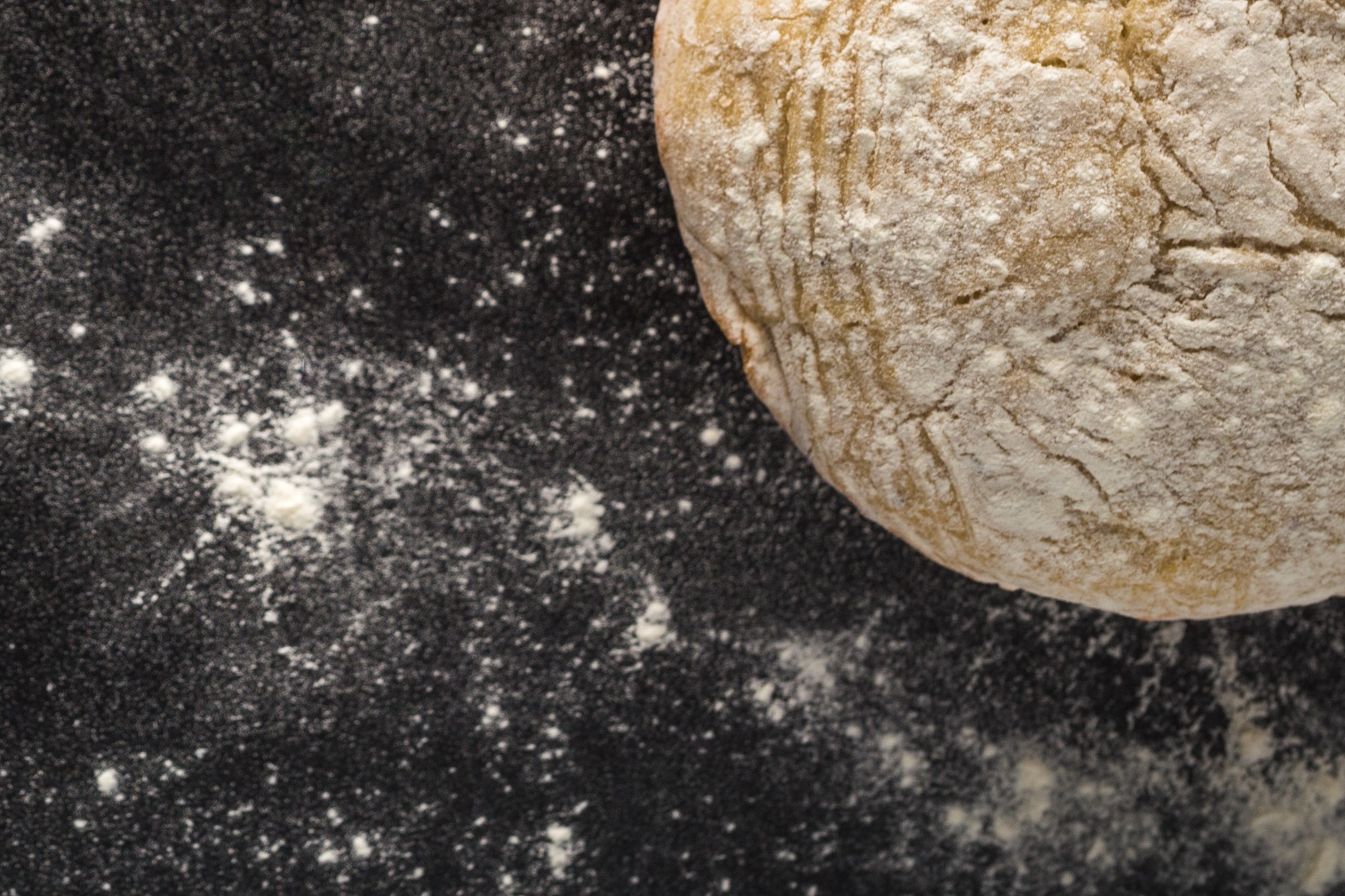Science Behind A Pretzel
What's the science behind these pretzels?
Organic chemistry and biochemistry will never, by themselves, enable us to create a recipe. They can however, help us understand why successful recipes work, and in so doing, help us create new ones that are even better.
Try a few of these pretzel treatments to see which you prefer.
I love pretzels, and this just might be your next home baking experiment. Next time you make pretzels (or bagels) try a few of these treatments to see which you prefer for your time and effort (1) make a lye water bath and float your pretzel for about a minute a side. Not into lye? Me neither. Try (2) making a baking soda water bath, and, easiest yet, (3) do what King Arthur Flour does and dissolve non-diastatic malt powder (a derivative of roasted barley) in the water, brush the pretzels with the solution, sprinkle with your topping (if used), then bake.
From my long ago organic chemistry let's look at the pretzel more closely.
Yes, I am a long ago organic chemist and I did work in Material Sciences at the "LM Palo Alto Research Laboratories", but we always used safety protection. In the laboratory I wore close-toed shoes, a lab-coat, gloves, safety glasses and we had a fume hood. In this post we are reviewing some of the science in the recipe Sourdough Pretzels, published by King Arthur Flour. We are not actually reviewing the pretzel recipe itself but rather the techniques behind the pretzel bath.
Let's break down whats happening on the pretzel's surface.
Let's break down what's happening on the pretzel's surface for each of these treatments. In my beginning baking years I was a little intimidated with the practice of floating a pretzel or bagel in my kitchen in a lye solution. Many years ago, pretzel manufactures figured out that if you bathe a pretzel in lye and water you modify the surface chemistry and a beautiful brown pretzel would develop. These are the same soft warm pretzels you buy at the ball park.
Flour is acidic, who knew?
When I started to study the science in food I too had been unaware that flour is acidic. Yes, that means it has a pH less than neutral water (7.0) somewhere between 6.0 and 6.8, which varies from manufacturer to manufacturer. Due to the natural acidity of flour it limits a very special set of chemical reactions important to the browning of baked goods.
These chemical reactions are called the Maillard reactions and professional bakers are trained to work with them. Maillard reaction occurs between amino acids (or a free amino group of an amino acid that is part of a protein chain) and reducing sugars (a sugar which donates electrons in the chemical reaction). Some examples of reducing sugars are glucose, fructose, lactose, and maltose (sucrose, or common table sugar is not a reducing sugar).
Maillard reaction is important in browning, flavor and aroma.
Reducing sugars readily interact with amino group and give rise to the Maillard reaction products, which lead to progressive browning and aroma formation. This reaction is also called non-enzymic browning to differentiate it from the often rapid, enzyme-catalyzed browning commonly observed in fresh fruits and vegetables, such as apples and potatoes. Maillard browning products are found where reducing sugars and amino acids, proteins, and/or other nitrogen-containing compounds are heated together, such as in soy sauce, bread crusts, even contributors to the flavor of milk chocolate. Other examples include, the color and aroma of your favorite dark beer, some of your favorite baked goods, and your grilled burger are, at least in part, due to this reaction.[1],[2]
OK, we got through the chemistry lesson, so let's move on. Here is the important part: the Maillard reaction, is accelerated in an alkaline environment. The lye, as well as the baking soda, increases the alkalinity of the surface of the pretzel and allows for a browning reaction between amino group and reducing sugars to occur. So now you know why we float pretzels and bagels in an alkali solution like lye or baking soda.
What is non-diastatic malt powder?
What about the non-diastatic malt powder used in this recipe? So, what is this malt powder? Here's what it's not: diastatic malt. Diastatic malt powder, in addition to the coloring and flavoring effects, also affects the developing chemistry of dough. Diastatic malt contains active enzymes. So, what about non-diastatic malt powder? Non-diastatic malt powder has no active enzymes and is used for flavor just like molasses. In this case, it is the sugars that caramelize. Caramelization may sometimes cause browning in the same foods in which the Maillard reaction occurs, but the two processes are distinct. They both are promoted by heating, but the Maillard reaction involves amino acids, as discussed above, whereas caramelization is the heating of carbohydrate, in particular sucrose, and a reducing sugar without nitrogen-containing compounds (meaning no protein is needed) facilitated with a small amount of acid (as found in the flour) and certain salts.[1],[2]
So....We looked at a few possible Pretzel bath treatments, and the chemistry behind them.. These included: (1) make a lye water bath, (2) make a baking soda water bath, or (3) dissolve non-diastatic malt powder in the water and brush the pretzels. So, what is the best treatment? King Arthur Flour did not use a water-bath treated with lye. Why not? We would have to assume that because lye is caustic and requires the user to wear gloves and have sufficient ventilation, it is understandable that, King Arthur Flour would not have used this method. On the other hand, a baking soda solution is an alternative which many bakers might try. Only you can decide which produces the best pretzel flavor and texture, Maillard reaction or caramelization, and this might spark your next home baking experiment.
References for this post:
1. Fennema, O. R. (1996). Food Chemistry Third Edition (N.Y. Marcel Dekker), pp. 171-173.
2. Feeney, R.E., and J.R. Whitaker (1982). The Maillard reaction and its preservation. In Food Protein Deterioration, Mechanisms and Functionality (J.P.Cerry,ed.), ACS Symposium Series 206, ACS Washington, DC, pp. 201-229











